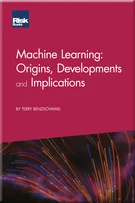Challenges of operational risk advanced capital models
Introduction
Challenges of operational risk advanced capital models
Part I: Capture and Determination of the Four Data Elements
Collection of operational loss data: ILD and ED
Scenario analysis framework and BEICFs integration
Part II: General Framework for Operational Risk Capital Modelling
Loss data modelling: ILD and ED
Distributions for modelling operational risk capital
Scenario analysis modelling
Exposure-based approaches
BEICFs modelling and integration into the capital model
Hybrid model construction: Integration of ILD, ED and SA
Derivation of the joint distribution and capitalisation of operational risk
Backtesting, stress testing and sensitivity analysis
Regulatory approval report
Evolving from a plain vanilla to a state-of-the-art model
Part III: Use Test, Integrating Capital Results into the Institution’s Day-to-day Risk Management
Strategic and operational business planning and monitoring
Risk/reward evaluation of mitigation and control effectiveness
Appendix 1: Credibility theory
Appendix 2: Mathematical optimisation methods required for operational risk modelling and other risk mitigation processes
Business risk quantification
One particular challenge of operational risk capital modelling is in regard to data quality. Data quality represents the foundation of an operational risk capital model as the quality of the model output cannot exceed that of its inputs. Data quality affects all the four data elements of the capital model: ILD, ED, SA and BEICFs.
ILD must be collected with completeness (BUs, size, risk types and other considerations), ensuring its consistency with accounting, and each event should contain specific data fields appropriately populated. Additionally, the collection should follow a particular definition and methodologies, permitting the correct modelling of operational risk loss distributions (an example of these definitions and methodologies can be found in the Operational Risk Reporting Standards of the Operational Riskdata eXchange Association (ORX)). To guarantee adherence to these, it is necessary to implement a workflow with the corresponding approvals where the data quality is validated before being ratified for quantification. Finally, the ILD collection ideally should guarantee a trail and have adequate data certificates (see Chapter 2).
To obtain an SA with the
Copyright Infopro Digital Limited. All rights reserved.
As outlined in our terms and conditions, https://www.infopro-digital.com/terms-and-conditions/subscriptions/ (point 2.4), printing is limited to a single copy.
If you would like to purchase additional rights please email info@risk.net
Copyright Infopro Digital Limited. All rights reserved.
You may share this content using our article tools. As outlined in our terms and conditions, https://www.infopro-digital.com/terms-and-conditions/subscriptions/ (clause 2.4), an Authorised User may only make one copy of the materials for their own personal use. You must also comply with the restrictions in clause 2.5.
If you would like to purchase additional rights please email info@risk.net










